U.S. Coast Guard Cutter McCulloch
Worthy of Preservation
On April 22, 2021 the shipwreck remains of the USCG Cutter McCulloch was officially listed on the National Register of Historic Places. The nomination to the register was a joint submission by NOAA's Office of National Marine Sanctuaries and the U.S. Coast Guard. The National Register listing highlights the national significance of the archaeological remains of the shipwreck, and McCulloch's role for the U.S. Revenue Service in the Bering Sea Patrols as a floating courtroom, and serving at the Battle of Manila Bay under the command of Commodore George Dewey.
The Discovery
McCulloch was sunk in a collision with the passenger ship SS Governor off Point Conception, California on June 13, 1917. The ship’s precise location was unknown for nearly 100 years. During a joint NOAA – USCG remotely operated vehicle (ROV) training mission in October 2016, the science team confirmed the historic remains of the USCG Cutter McCulloch off Point Conception, known as the "Cape Horn of the Pacific." Working off the Channel Islands National Marine Sanctuary's R/V Shearwater, a VideoRay Mission Specialist ROV was deployed to survey and characterize the archaeological remains of this historically significant shipwreck in America's U.S. Coast Guard and U.S. Navy's military history.
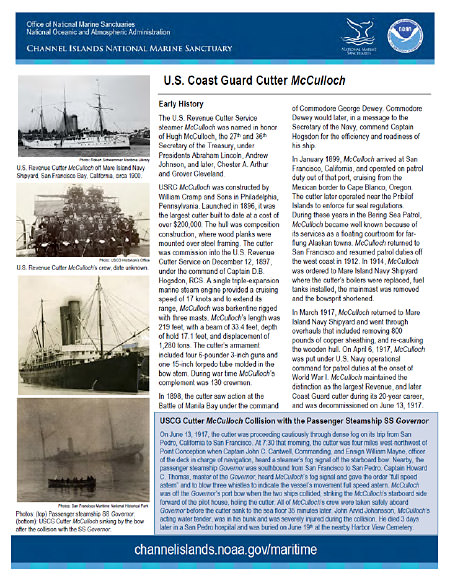
U.S. Coast Guard Cutter McCulloch Fact Sheet
Credit: NOAA/USCG/VideoRay/NPS
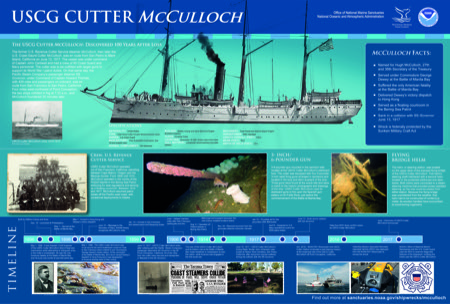
USCG Cutter McCulloch timeline poster.
Credit: NOAA/USCG/VideoRay
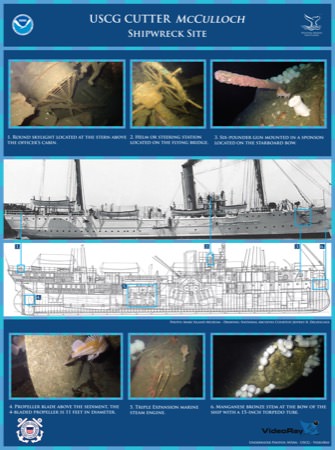
USCG Cutter McCulloch underwater shipwreck poster, site interpretation by Robert Schwemmer and Steve Lawson.
Credit: NOAA/USCG/VideoRay
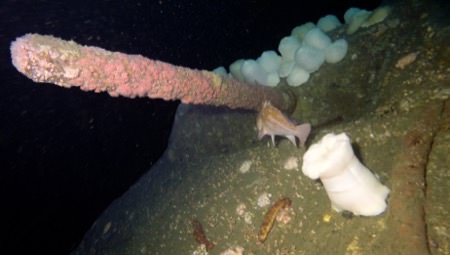
A key diagnostic artifact discovered at the shipwreck site of the USCG Cutter McCulloch is a 6-pounder gun mounted in the sponson located at the starboard bow. The cutter was equipped with four 6-pounder, 3-inch rapid firing guns arranged in sponsons and located in the bow and stern quarters of the ship. The USRC Cutter McCulloch used its starboard guns to fire upon the Spanish gun battery on El Fraile Rock, just before the commencement of the Battle at Manila Bay.
Credit: NOAA/USCG/VideoRay
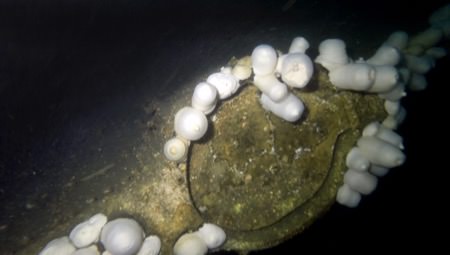
The first diagnostic artifact discovered at the shipwreck site of the USCG Cutter McCulloch is the 15-inch torpedo tube molded into the bow stem. Metridium anemones drape the bow stem and are found on other sections of the wreck where there is exposure to prevailing currents.
Credit: NOAA/USCG/VideoRay
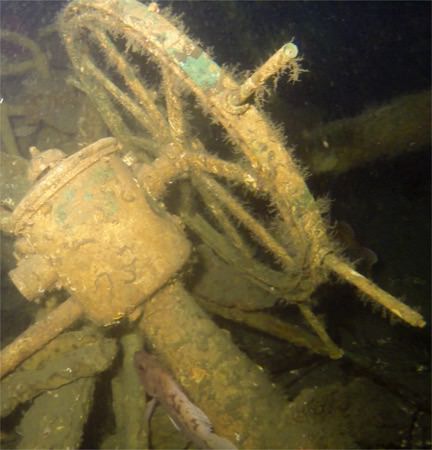
The helm, or steering station, was located on the upper-deck of the flying bridge of the USCG Cutter McCulloch. The helm's steering shaft interfaced with a second helm located in the protected pilothouse one deck below. Both helms were connected to a steam steering machine that provided power-assisted steering, so the ship could be piloted from either station. Because the flying bridge was unprotected from the weather, that helm had to be constructed of a nonferrous metal. Its wooden handles have succumbed to wood-boring organisms.
Credit: NOAA/USCG/VideoRay
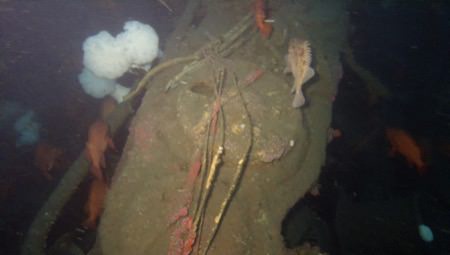
The USCG Cutter McCulloch was equipped with a single triple expansion marine steam engine constructed by William Cramp and Sons Ship and Engine Building Company. The steam engine generated 2400 horsepower indicated. McCulloch’s cruising speed was 17 knots.
Credit: NOAA/USCG/VideoRay
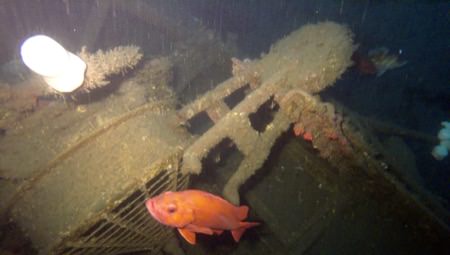
A circular skylight collapsed inside the officer's quarters in the stern of the shipwreck USCG Cutter McCulloch. To the right of the skylight is a sounding machine that was used to determine the depth of water and was once located on the upper poop deck. The wreck provides habitat for various species of marine life, including vermillion rockfish.
Credit: NOAA/USCG/VideoRay
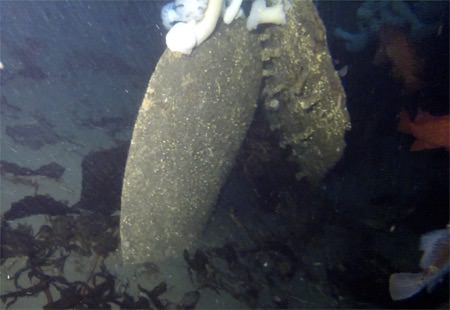
The top of a propeller blade appears through the sea floor sediment at the stern of the shipwreck USCG Cutter McCulloch. The cutter was equipped with a single 11-foot; manganese bronze four-bladed propeller secured to a cast steel hub with bronze studs.
Credit: NOAA/USCG/VideoRay
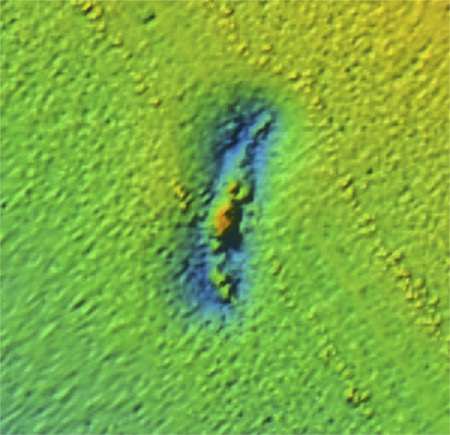
Multibeam sonar image processed by Gary Fabian show the shipwreck USCG Cutter McCulloch. The survey was conducted in 2015 off Ocean Exploration Trust’s vessel E/V Nautilus for NOAA’s Office of National Marine Sanctuaries.
Photo: E/V Nautilus Multibeam Sonar Survey 2015
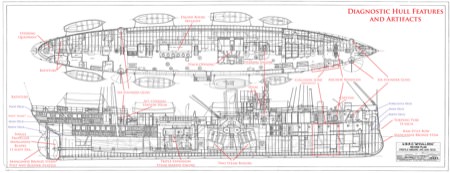
This drawing was used during the archaeological site survey to provide important information on diagnostic features of the USCG Cutter McCulloch and the locations of key artifacts to confirm the identification of the shipwreck, with notations by Robert V. Schwemmer.
Image: National Archives Washington DC, courtesy Jeff Delsescaux
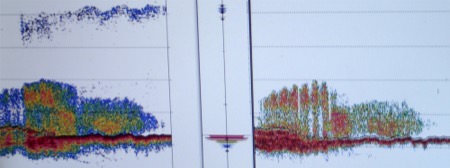
Fathometer image taken on board NOAA’s Channel Islands National Marine Sanctuary research vessel Shearwater in 2014 shows depth soundings over the shipwreck USCG Cutter McCulloch.
Credit: Robert V. Schwemmer NOAA
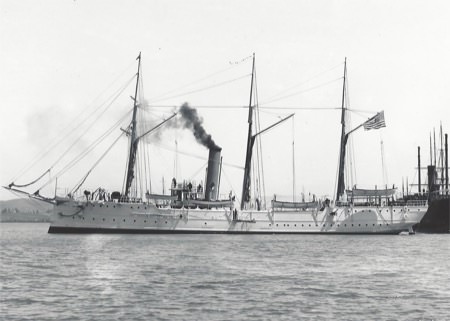
USRC Cutter McCulloch was constructed by William Cramp and Sons Ship and Engine Building Company in Philadelphia, Pennsylvania. Launched in 1896, it was the largest cutter built to date at a cost of over $200,000. McCulloch maintained the distinction as the largest revenue cutter, and later USCG cutter, during its 20-year career.
Credit: Mare Island Museum
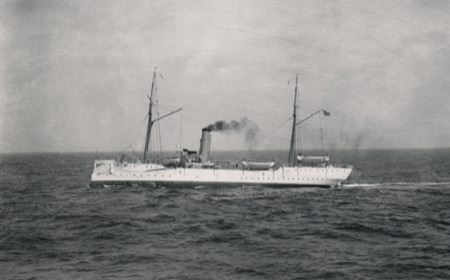
In 1914, USRC Cutter McCulloch was ordered to Mare Island Navy Shipyard where the cutter's boilers were replaced, the mainmast was removed and the bowsprit shortened. In 1915, McCulloch became a US Coast Guard Cutter when the US Revenue Cutter Service and US Life-Saving Service were combined to create the United States Coast Guard.
Credit: Gary Fabian Collection
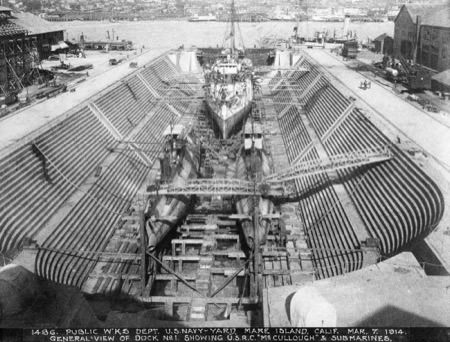
Credit: U.S. Navy
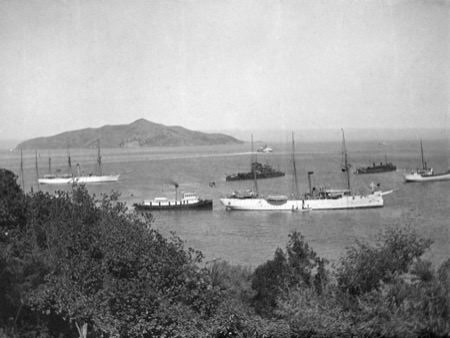
USRC Cutter McCulloch anchored off old town Sasualito, California. Sasualito served as the U.S. revenue cutter, than later, USCG cutter duty station just inside the Golden Gate entrance providing quick access to the Pacific Ocean for vessels in distressed. McCulloch's commanding officer Captain John Cantwell lived in Sasualito for 30 years, up until his death in 1940.
Credit: Sasualito Historical Society
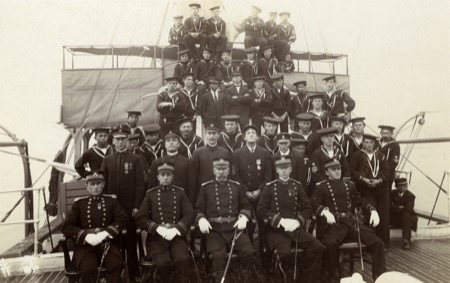
USRC Cutter McCulloch's crew, date unknown. In January 1899, McCulloch arrived San Francisco, California, and operated on patrol duty out of that port, cruising from the Mexican border to Cape Blanco, Oregon. The cutter later operated near the Pribilof Islands to enforce fur seal regulation. During these years in the Bering Sea Patrol, McCulloch became well known because of its services as a floating courtroom for far-flung Alaskan towns.
Credit: USCG Historian's Office
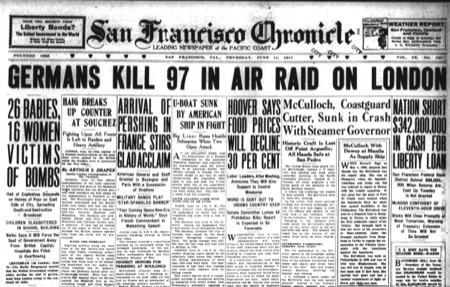
"McCulloch, Coastguard Cutter, Sunk in Crash With Steamer Governor – Historic Craft Is Lost Off Point Arguello; All Hands Safe at San Pedro"
Image: San Francisco Chronicle June 14, 1917
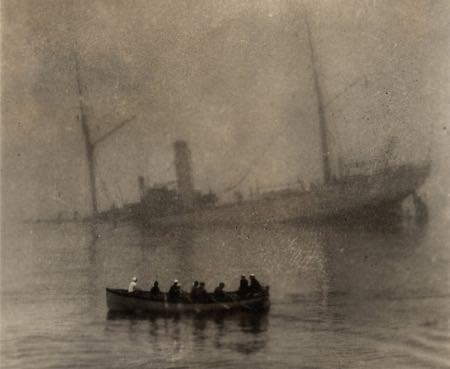
"When the boats were clear of the ship, Chief Engineer Glover in charge of the gig, came alongside and advise me to leave the ship as she was sinking faster every minute and nothing more could be done to save her. I thereupon slided [sic] down the boat-falls into the gig and we pulled clear to await further developments. The entire forward section of the deck was submerged and the propeller was half out water. At 8:06 A.M., about twenty minutes after the collision, the ‘McCulloch' with colors flying, suddenly up-ended and sank in 60 fathoms of water" Captain John C. Cantwell, Commanding, USCG Cutter McCulloch. USCG Cutter McCulloch's crew stood at attention in the lifeboats as their ship sunk off Point Conception.
Credit: San Francisco Maritime National Historical Park_K03.7.068.3p
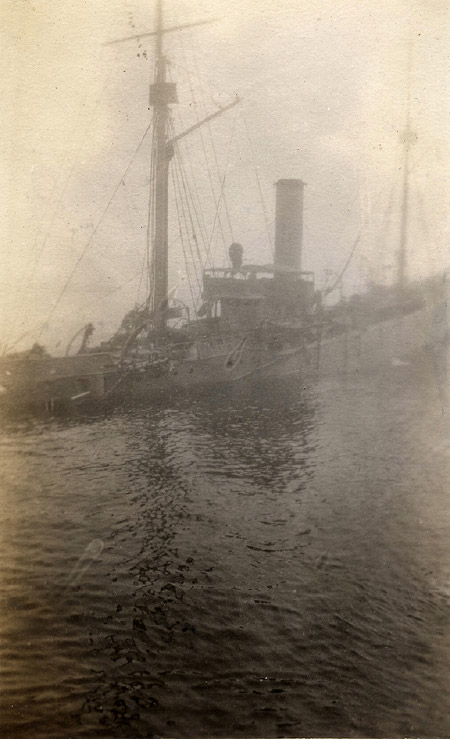
"I heard the signal to abandon ship and went up on deck through the companionway onto the main deck to go to my station when I heard someone singing out for help. It was Johanson [sic] and he was all doubled up in the wreckage about three feet from where his bunk was. He was out against the ice boxes. There was nobody else around, so I took some of the wreckage away and there was a piece of wood eight inches long stuck in his side. The master-at-arms passed the word for men to carry him to a surf boat." Robert Grassow, Carpenter, USCG Cutter McCulloch.
Credit: San Francisco Maritime National Historical Park_ K036.07068.1o
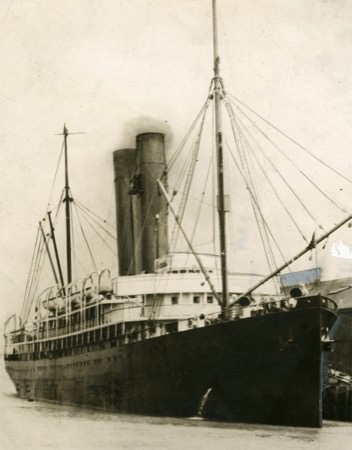
The passenger steamship SS Governor was owned by the Pacific Coast Company and managed by the Pacific Steamship Company in 1917. During the collision with the USCG Cutter McCulloch, there were 429 passengers and crew onboard the SS Governor with no reported injuries. The SS Governor was found at fault for not obeying the "rules of the road" and agreed to a settlement payment to the U.S. government of $167,500 in December 1923.
Credit: San Francisco Maritime National Historical Park_ A01.3.657pl (SAFR 21374)
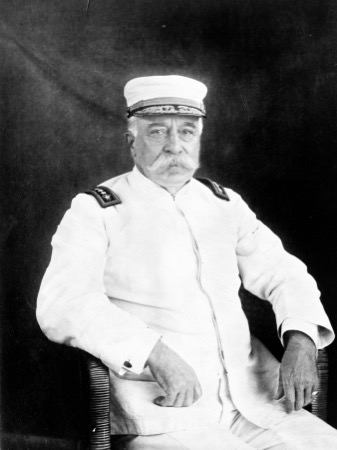
Admiral of the U.S. Navy George Dewey. In 1898, the USRC Cutter McCulloch saw action at the Battle of Manila Bay under the command of Commodore George Dewey. Commodore Dewey would later, in a message to the Secretary of the Navy, commend Captain Hogsdon for the efficiency and readiness of his ship.
Credit: Library of Congress
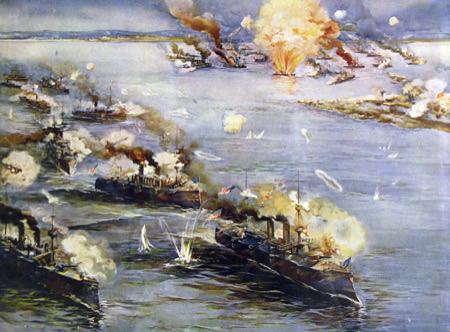
Battle of Manila Bay, May 1, 1898, with Manila Philippines, in the top center, and the Spanish fleet in the upper right. Ships listed descending on the left to bottom: cutter USRC Cutter McCulloch; gunboats USS Petrel and USS Concord; protected cruisers USS Boston, USS Raleigh, USS Baltimore, and USS Olympia flagship, signaling "Remember the Maine."
Credit: Library of Congress
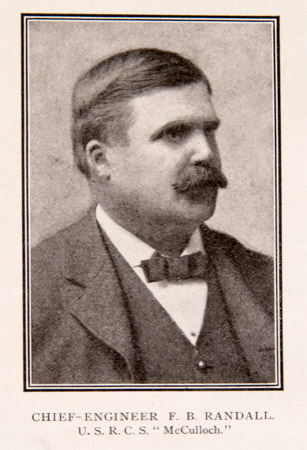
At the Battle of Manila Bay, as USRC Cutter McCulloch was passing El Fraile Rock, soot in the cutter’s stack caught fire and sent up a column of fire. The battery at El Fraile fired at McCulloch. The USS Boston and McCulloch responded, silencing the Spanish guns. Chief Engineer Frank B. Randall died from heat and overexertion while trying to extinguish the smokestack fire, the only American death at the battle.
Credit: Harper’s Weekly 1899, Robert Schwemmer Maritime Library
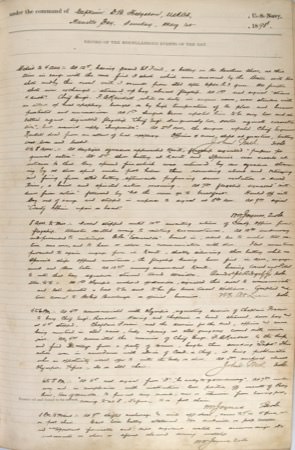
USRC Cutter McCulloch's official log book, Battle of Manila Bay May 1, 1898. "At 4:00 [P.M.] communicated with Olympia, requesting services of Chaplain Frasier to bury Chief Engr. Randall. Having rcvd Chaplain on board steamed down bay and at 4:15 stopped. Chaplain Frasier read the service from the dead, officers and crew being mustered in stbd waist, body exposing at stbd gangway covered with union jack. At 4:20 committed the remains of Chief Engr. F.B. Randall to the deep and fired 3 volleys from the party of 16 men, bugler there sounding "Taps".
Credit: National Archives Washington DC., Robert V. Schwemmer NOAA
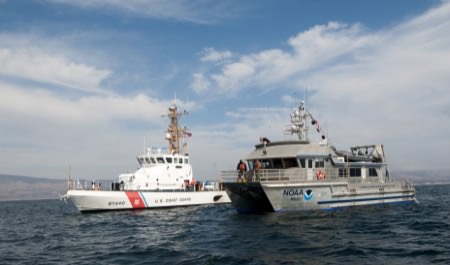
NOAA R/V Shearwater (right) and USCG Cutter Halibut (left) conduct remotely operated vehicle (ROV) operations over the USCG Cutter McCulloch shipwreck site.
Credit: Robert V. Schwemmer NOAA
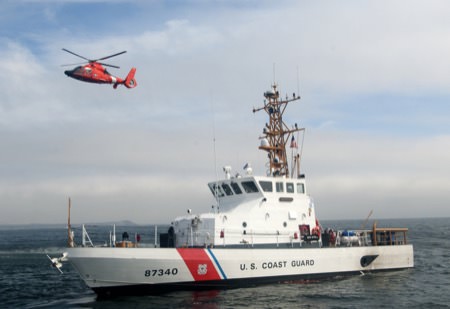
USCG Cutter Halibut and USCG Dolphin 6570 pay tribute over the USCG Cutter McCulloch shipwreck site.
Credit: Robert V. Schwemmer NOAA
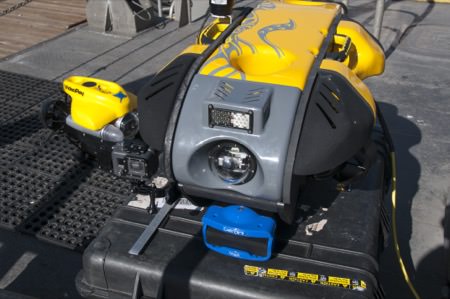
VideoRay Mission Specialist remotely operated vehicle (ROV) on board the NOAA R/V Shearwater.
Credit: Robert V. Schwemmer NOAA
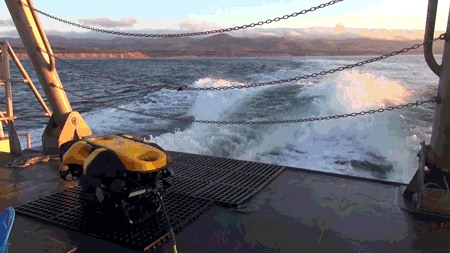
B-Roll Video
Credit: NOAA/USCG/VideoRay

